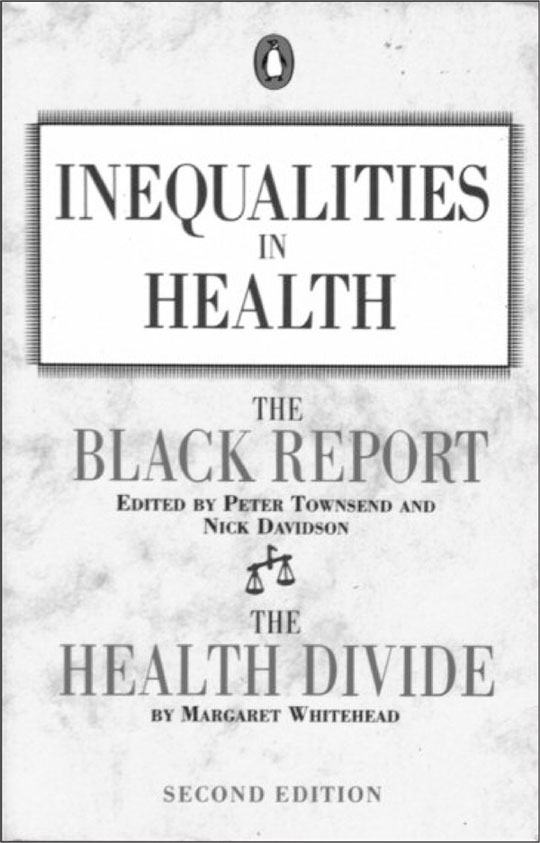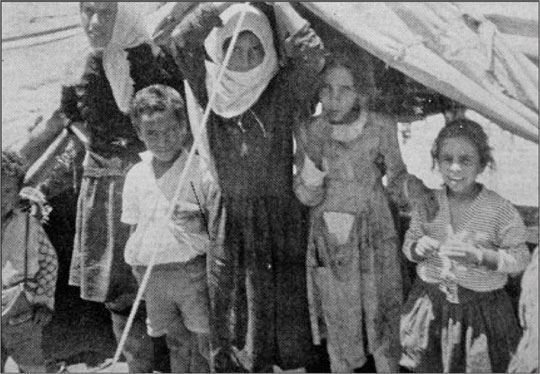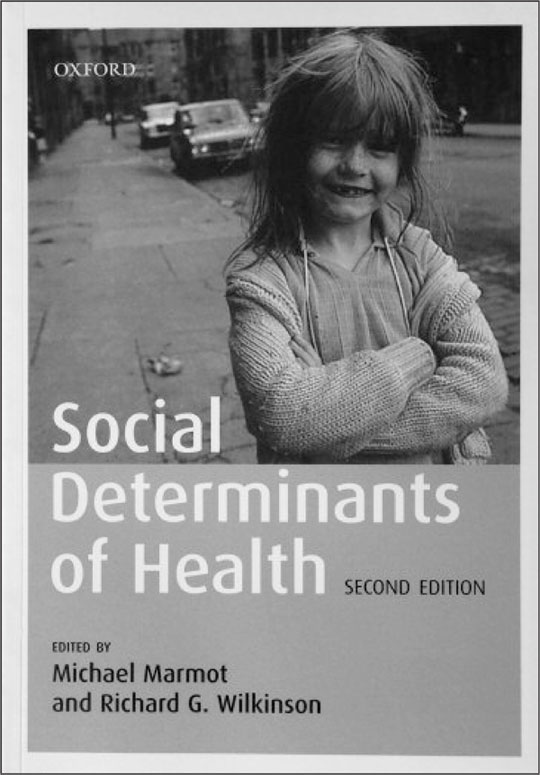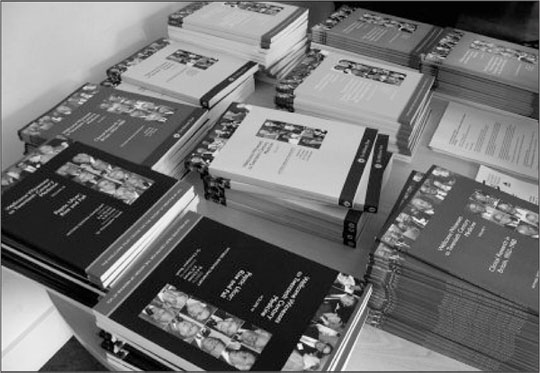Social determinants of health past and present – impressions from a conference
Michael 2006;3:157–68
History rediscovered
Historians probably never have doubted that their knowledge is a valuable tool when planning for the future. The conference History of the Social Determinants of Health, held at the University College London 19.-21. September 2006 by The Wellcome Trust Centre for the History of Medicine in cooperation with Professor Bernardino Fantini (Geneva) and the chairman of the WHO Commission on Social Determinants of Health, proved that this opinion also was shared by researchers from other disciplines and by officials working with practical problems in the field of public health.
The audience consisted of ca. thirty speakers and discussants from different countries, in addition to around forty other participants. Some of them were historians, but many had other backgrounds. The discussions were vivid and became partly heated when the political sides of the social determinants of health were at issue.
The presentations swept over wide fields as a global history approach seemed appropriate in order to describe general trends in the development of health and living conditions for various populations. Even if generalisations are difficult, it was quite clear that historical processes may have effects that last for generations, and that what we see and do today will have similar future implications.
Learning from differences
In her presentation, Professor Alison Bashford from University of Sydney (Australia) discussed ill-health and social problems after the British colonisation. Although there were differences between the generations in hygienic practices etc., life expectancy dates and other statistics clearly demonstrated that differences between population groups persisted, e.g. between the indigenous inhabitants and the new Australians. She compared the situation in Australia with Papua New Guinea and found that the health conditions there had much in common with those of the indigenous tribes in Australia.
Among many points of discussion which were taken up, was the issue of health equity resulting from prevailing exclusion and inclusion policies. Here also the organisation of the health care system may be an important social determinant for health. Human rights and health equity are closely linked, and she pointed at situations when public health measures intentionally were not applied to aborigines, even when available. But her question remained hanging in the air: – Are we responsible for what happened in the past?
Professor Paul Greenough from the University of Iowa had an even more difficult task in commenting on the situation in Asia as a whole. Obviously, with a continent with huge internal differences, finding a common denominator which could explain e.g. the attitudes towards public health activities, may seem hopeless. However, he chose to discuss the importance of the family in Asia. Very often, the most important social group for the Asians is the family. Identification and loyalty is with the family. Individualism is not so prominent, but on the other hand, bindings to the larger groups outside the family are weaker. This special trait of Asian societies may explain many sides of development. In applying public health services, this difference from e.g. Western societies suggests that the family should be the obvious target.

Figure 1: Revealing inequalities in health in modern UK – the Black Report from 1980. This 1992 edition also contains the follow up report by Margaret Whitehead, first published in 1988.
In his comments, Professor Sir Michael Marmot addressed the situation in the new Eastern Europe, where interesting health inequalities came up after the collapse of the communist rule. A striking finding is that the mortality of men has risen as compared to the female population.
New life-styles and new inequalities and differences have created new public health problems.
Public health programmes, resistance and outcomes
It is an ongoing discussion in public health circles to what extent «vertical» programmes, set up and aimed exclusively at one problem, are the most appropriate approach. An alternative method is the launching of «horizontal» programmes on a broader scale, e.g. through the strengthening of primary health care. Here, historical experiences may be useful:
Professor Marcos Cueto from University Cayetano Heredia in Peru had studied the malaria eradication campaigns which were set up as a vertical programme in Mexico from 1950. 42 million people from around 400 ethic groups had to be addressed. The question which might be shed light upon through a historical review, is to what extent the top-down administered «vertical» policy was likely to work.
The malaria campaign was met with different types of resistance. One of them was the cultural clash: In the minds of people, malaria was perceived as a disease of the peasants, a cultural stereotype which linked malaria with fatalism, apathy and poverty. Eradication campaigns were perceived as an attempt to «mexicanize» the indigenous population, and even as a campaign to counteract communism.
An anthropological critique was also heard: The campaign did not pay enough attention to the cultural dimension. There were different conceptions of malaria essentials like body, fever, and blood. Taking blood smears was feared to lead to weakness, sterility, and even proneness to suffer from the «evil eye». And perhaps blood samples were drawn to assess the health situation of the population before all were destroyed? Or before being sold to the Americans?
The campaign was also criticised from medical circles: A medical doctor argued that it did not take sufficient notice of migration patterns and housing conditions, which might have been an important point, but on the other hand he also denounced the use of DDT because it could kill hens, bees and domestic animals, and perhaps cause cancer.
Protests from local leaders and communities could consist of objections which in light of history were in favour of a «horizontal» approach: Poverty, hunger and other diseases should be given priority. But they also had a quite specific objection: DDT contained bed-bug eggs, so that bedbug eradication was requested!

Figure 2: The war that never ends: Children in the Baqaa refugee camp in Jordan after the 1967 Middle East war. (Photo: Dr. Ingegerd Frøyshov 1968)
Some similar questions were taken up by Professor Randall Packard, Director of the Institute for History of medicine at Johns Hopkins University. His lecture dealt with social determinants of health in Africa. In Africa also the cultural encounter between the colonial administrators and the native populations led to differences in health, health conditions and health behaviour which have been explained in various ways. Also for Africa, anthropologists have had valid arguments on the necessity of understanding African ways of life in order to implement effective public health measures. As an example was mentioned the structural determinants of AIDS, like the situation for women, labour migration, the relation between social capital and risk of infection, and the cultural meanings of sex and gender.
The discussant was Dr. Hernan Sandoval, President of the Chilean Corporación Chile Ambiente and former Chilean Ambassador to France. He drew attention to political arguments of importance in health campaigns: An example: Was DDT banned because it was too cheap?

Figure 3: Uruguay – a transit country for immigration to South America where public health measures against infant mortality for a long time did not work. The picture shows the main street in the small city of Colonia del Sacramento, Uruguay. (Photo Øivind Larsen 2006)
He also stressed the importance of using a broad view on the consequences of environment for health: His first job in France after having fled Chile and Pinochet for political reasons had been to study the health impacts of the Gabon railway in Africa. At first sight a far fetched connection, at the second indeed not!
And social determinants are also close connected with social justice – a matter for the politicians!
The so-called Western world – a special case?
Dr. Elizabeth Fee from the United States National Library of Medicine pointed to some interesting issues in the history of social determinants and health inequalities in her country, among them that the phrase health disparity was the preferred metaphor because of its linguistic and political neutrality. The interest in studies of health determinants had varied. Depression studies experienced a heyday in the 1930’s and a research memo- randum on social aspects of health was published in 1937. But then wartime came and other interests took over, one had to wait for a new generation of researchers.
Professor Bernardino Fantini used malaria and the deserted Italian city of Ninfa as his point of origin, highlighting a series of factors acting when a disease interplays with a population, in this case the Mediterranean.
Northern Europe was covered by Professor Jan Sundin from Sweden. He swept over the centuries with a broad brush, yet in an instructive way, and showed e.g. how the population changes in the wake of the demographic transition led to growth of the group of landless people in the Swedish countryside, which in the larger perspective meant a general social slide downwards. In the period approximately delineated by 1820 and 1860 there was a «male mortality hump» in Sweden. Much of the surplus male mortality of that time could be ascribed to alcohol abuse.
The discussion following the introductory papers in this session dealt with matters like the impact of health on productivity, competition abilities etc., and also on the dependence of internal politics, as proved by the differences between the neighbouring countries of Spain and Portugal.
Professor Virginia Berridge from London School of Hygiene and Tropical medicine in this connection drew up an interesting story from her own country: The so-called Black Report on inequalities in health (1980) was written by a group of researchers who had been commissioned by the labour government, but the report was suppressed at the time of publication by the subsequent Margaret Thatcher regime. Paradoxically, this fact led to an extreme interest just for inequalities in health and the social determinants behind them, provoking attention and research in the field also in other countries!
In discussion, Sir Michael Marmot asked what could be learnt from the Nordic experiences. And should the WHO-commission only relate to national governments? What about other networks, commercial, or politicians who for the time being are out of power? An evidence based politics was wanted: Someone has to learn from history and make the first move! Here contacts with civil groups in society often may yield useful information. They may have other opinions about what evidence matters, but they often know the answers. Always asking for the best evidence may serve as an excuse for doing nothing!
The assessment of global history
In a session chaired by one of the organisers from UCL, Dr. Sanjoy Bhattacharya, Thomson Prentice from WHO presented the Global Health His- tories initiative. The background of this WHO venture is the understanding that a command of health history helps response to today’s challenges, may shape policies, meet needs and create opportunities and contribute to the sharing of knowledge.
Under this umbrella, a history of global health projects is under its way. The history of the WHO itself and its achievements is also to be produced, as well as a series of «public health classics», reprints of important papers which have made a difference in the development. Oral history, including interviews with leading persons will be an important method, as is a series of seminars by international health historians. A comprehensive website, connected to the general WHO-website, and a resource- and research centre will be visible proofs on what is going on.
Race, ethnicity, gender, and class – conflicts and consequences
Is social epidemiology a science? This was one of the provoking questions asked by Professor Stephen Kunitz (New York). His answer obviously was a «yes». With examples from societies with strong internal conflicts, as in Yugoslavia he proved that place and social status are often more important for health, e.g. measured as mortality, than class.
Dr. Kasturi Sen, Research Director at INTRAC (International NGO Training and Research Centre) in Oxford, addressed the social and health consequences of military conflict upon civilian populations by means of examples from very recent history. In general, she stated, clash of civilisations, as accentuated in the modern «war on terror», will lead to an immense impact on health for the groups which are exposed. Chronic conflicts give wide health problems, and as a rule the poor are hurt the most. Herself, she had been engaged in field work in the Middle East since the 1990’s, also after the 2006 war in Lebanon. The general experience was that for the civilians, when the conflict ended, the war began! Large scale assaults destroyed cultural memory and identity with long standing effects. She pointed out that there exists only few studies on health consequences of modern war-fare of the Middle East type, especially from the developing world, and of the long-term impact of people being exposed to conflicts and having to rely on coping strategies. For many people the war never ends.
This situation should also be seen in light of the modern global economy with its concentration of wealth. In the wars, often the poor and those with a fragile agricultural economy are those who lose the most, such as recently in Lebanon, where the society also has confessional lines with inherent inequality and rich, trans-national groups living along with them.

Figure 4: The second edition of a book which is a must for everyone interested in health and society: Marmot M, Wilkinson RG. Social Determinants of Health. Oxford, Oxford University Press, 2006.
Objects for study in suffering civilian populations are among others the psychological and social injuries, the delayed symptoms and the effects of absence of public health policies. Studies made twenty years after the 1980–1981 war in Lebanon e.g. revealed high levels of depression and coping mechanisms, which included a psychological reconstruction of the past, aimed at an understanding of «why». Restoration of social networks obviously is of primary significance for the rehabilitation.
However: As this knowledge is not new: It is scaring to realise that making the most vulnerable parts of a population suffer, gives an aggressor the most long-lasting military benefits and psychological benefits of his destructive activities – although probably not counted as a victory in terms of political reputation and acceptance.
No surprise that the discussions were heated after these presentations!
Do social policies work?
Professor Roderick Lawrence from the University of Geneva made the WHO Healthy Cities Project one of his key points. Here, social, spatial, and temporal dimensions revealed the combined effects of exposure in the urban environment. His lecture was based on his own studies and on broad literature on urban ecology, stressing the necessity for looking at the interplay of various effects, and also at the issue of perception: e.g. the concept of density as an objective one, in contrast to the subjective feel of crowding.
Dr. Anne-Emanuelle Birn (Toronto) left the audience with interesting open question when presenting her studies from Uruguay for the years 1890–1950. In spite of a series of public health efforts there was a long-time stagnation in the decline of infant mortality. Why?
Realising that health care is politics
Professor Patrice Bourdelais (Paris) went directly to the core of the problems of global public health when pointing to the fact that the needs of the population often seems to be better taken care of in representative democracies than in other types of societies. Looking back at the times of colonisation, he concluded that the first part of the period as a rule led to a deterioration of the general health situation. On the other hand, in the long run, some public health legacies from the colonial periods also could be favourable for the new and free countries. Of course this statement caused discussion and comments.
Professor Imrana Qadeer (Dehli) went through the economic development of modern India from different angles. E. g. for the large parts of the population belonging to the agricultural sector, modern growth was dysfunctional and caused problems for living conditions. Also the modernization of health care in India tended to accentuate health differences. She was worried about politics, she concluded, and pointed out that there were lessons to learn which should be learnt.

Figure 5: At the conference a number of «witness reports» was presented. In the foreground «Peptic Ulcer: Rise and Fall». (Photo: Øivind Larsen)
Local history and practical work in public health
A general idea behind the whole conference was to extract important knowledge from the work by historians and use it in health planning. In his paper, Dr. Simon Szreter (Cambridge) showed how historical studies of the old British Poor Laws could highlight obvious human right problems of relevance today. Fiona Godlee, a medical doctor, editor of the British Medical Journal and herself with a background in medical history, presented refreshing links to the life and thinking of modern individuals. Margaret Thatcher left Britain with a divided society, Dr. Godlee pointed out. But how to handle this? Setting up guidelines on inequity? Equity as an outcome of intervention? Whom to target? And what about the issue of happiness and health?
The last sessions were mainly methodological and dealt with how to collect relevant historical information, and how to distribute it. The prominent issue was on «eliciting the past from the living». Dr. Tilli Tansey from the Wellcome Trust centre told about the witness seminar method, where key persons from various fields of medical development were invited to tell their stories. Up to now, 27 volumes of this type have been edited and published by Wellcome, but the same method is also used other places, so there are more publications available. Professor Tony Jefferson of Keele University then outlined his «free association, narrative and interview» method, which is presented in more detail in his book, written with Wendy Holway, Doing Qualitative Research Differently. This explores how to elicit «hidden» information from biographical narratives.
And professor Laurinda Abreu (Évora) presented the EU-financed Phoenix Thematic Network, which promotes conferences, publications and promising educational programmes.
A general conclusion: The important issue of social determinants of health seems to attract growing attention, not least because of the weight which nowadays is laid on the historical dimension. However, the crucial question is to what extent the increasing amount of knowledge can be converted into practical work.
Thanks are due to Professor Anne Hardy, University College London, for reading and commenting on this manuscript.
Professor
Institute of general practice and community medicine
Group of medical history
University of Oslo, Norway
oivind.larsen@medisin.uio.no
